This post may contain paid and/or affiliate links. I may make a small commission at no extra cost to you. Please see our Privacy Policy.
If you’re looking for a delicious, meal that’s perfect for family dinners, you’ve come to the right place.
Simple and easy, one-pot meals are fantastic recipes you can whip up without much hassle.
Jambalaya is a classic comfort food that combines bold Cajun flavours with the convenience of a one-pot meal. You’ll love how this dish requires minimal effort but delivers maximum taste.

By using just one pot, cleanup is a breeze, making this an ideal option for busy weeknights or relaxed weekend dinners.
Jump to Recipe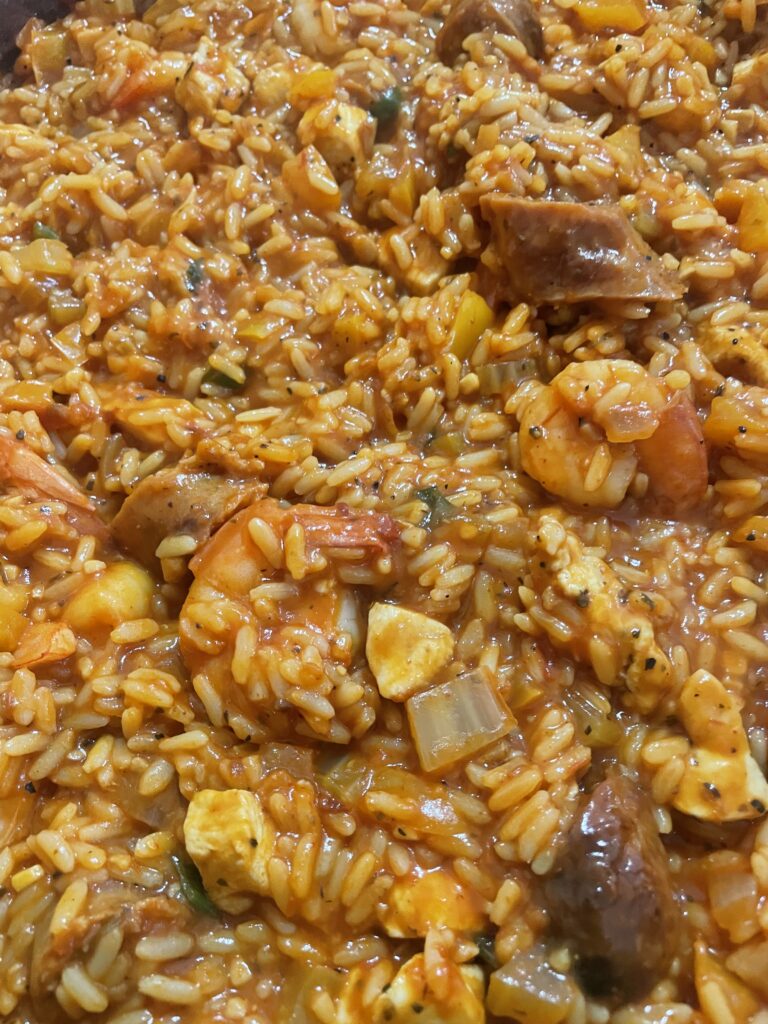
Steps
The first thing to do is to prep all of your ingredients. We are going to chop all of our veggies first, which are our green pepper, celery, onions, and green onions.
Then we can chop the chicken last so we can use the same cutting board without worrying about the chicken juices getting on the veggies.
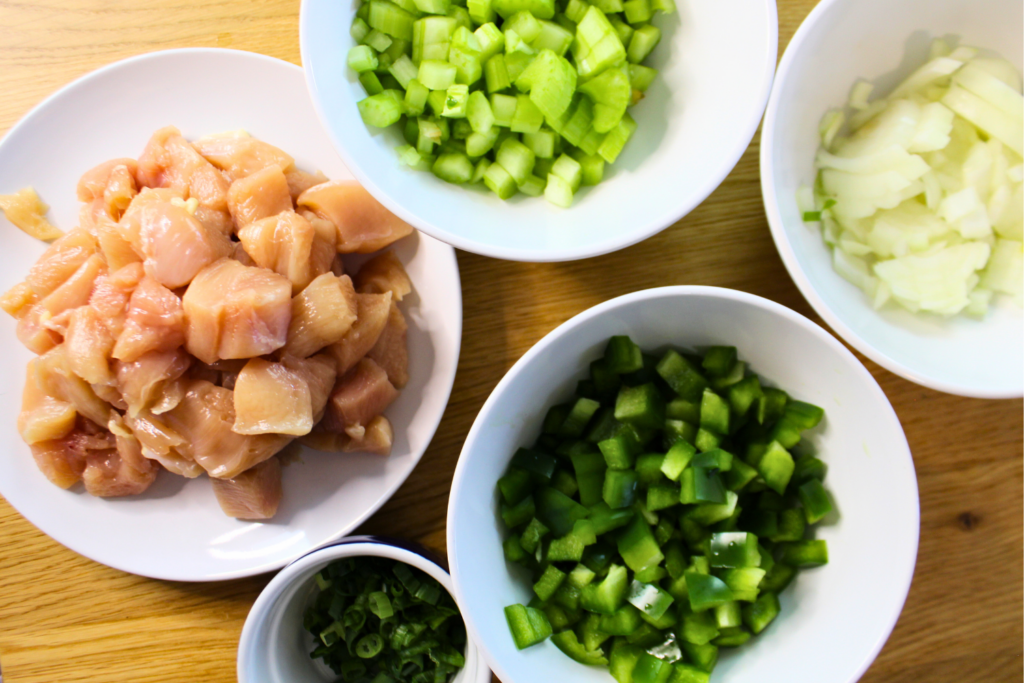
Once all of our prep work is done, then we can start cooking our sausages. We want the sausages to have a nice crust on the outside, they don’t need to be cooked all the way through yet.
You can use any type of sausage you like, but we like to use a spicy sausage to add even more flavour.
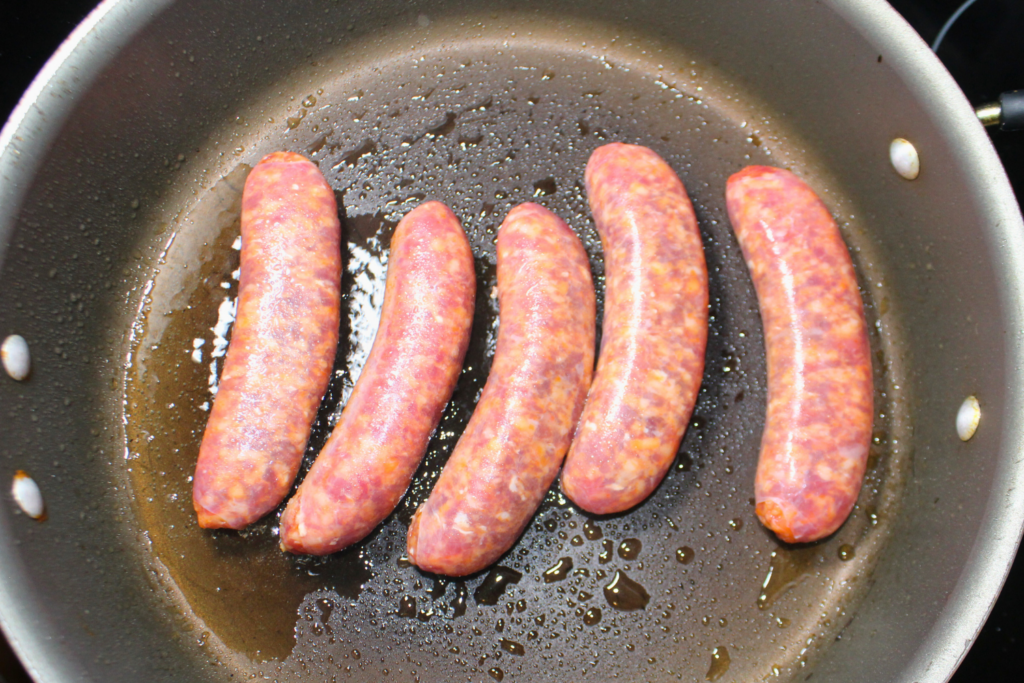
Once you notice a good colour on the sausages then you can remove them from the pan and cook them in the oven for an extra 10-15 minutes to continue cooking the inside. You may need to do this if you are using frozen sausage like we were.
The next step is cooking the chicken, you want to brown the chicken and get a good colour.
You want to do this all in the same pot so you get the crispy bits on the bottom of the pan. This will add more depth to the jambalaya.

Once the chicken is cooked, then you can remove it and set it aside.
Then we can add the veggies and start browning all of those until they soften. Once, they soften, then you can add in the chicken stock, crushed tomatoes, thyme, cayenne pepper, and Cajun seasoning.
Stir everything together and bring to a boil.
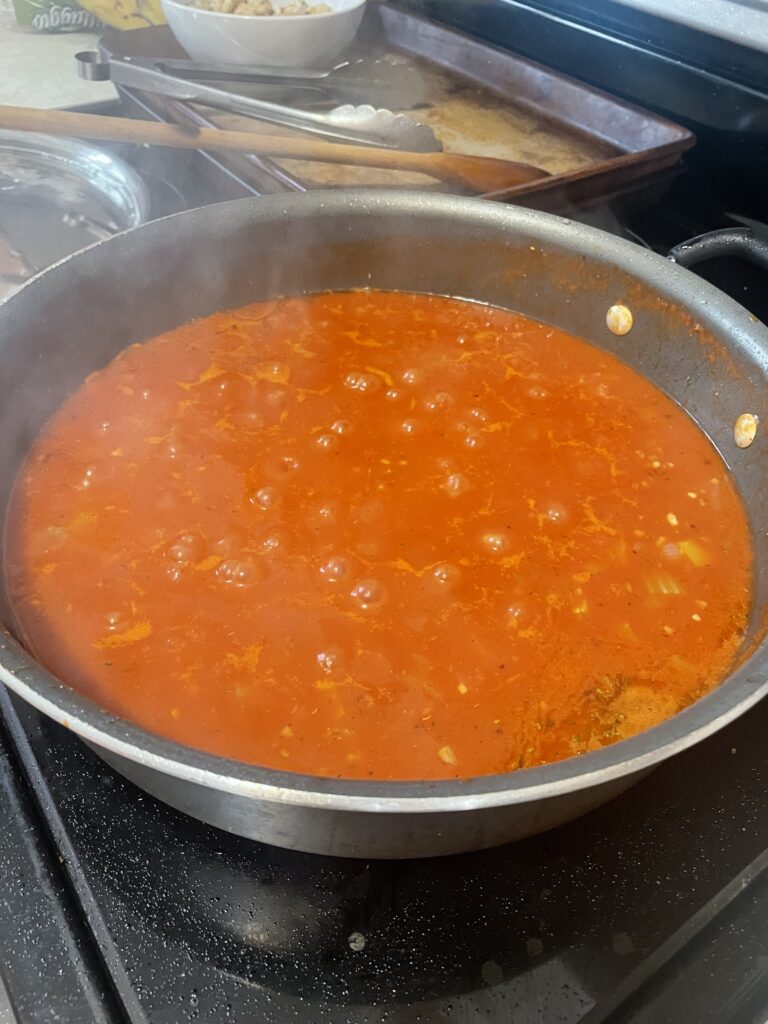
Once everything starts to thicken up you can add in the rice. Leave this covered for a bit and turn down the heat so it does not stick to the bottom. Cover the dish so the rice can cook.
Then add in your raw shrimp it will cook in the broth.
If you are using cooked shrimp then wait a little longer because you do not want to overcook the shrimp.

As it cooks, everything cooks together and starts to thicken up.
This is the final Jambalaya that is easy to make and has an amazing flavour.
It is a way to add more flavour to your weeknight dinners. If you have teenagers, they will LOVE this!
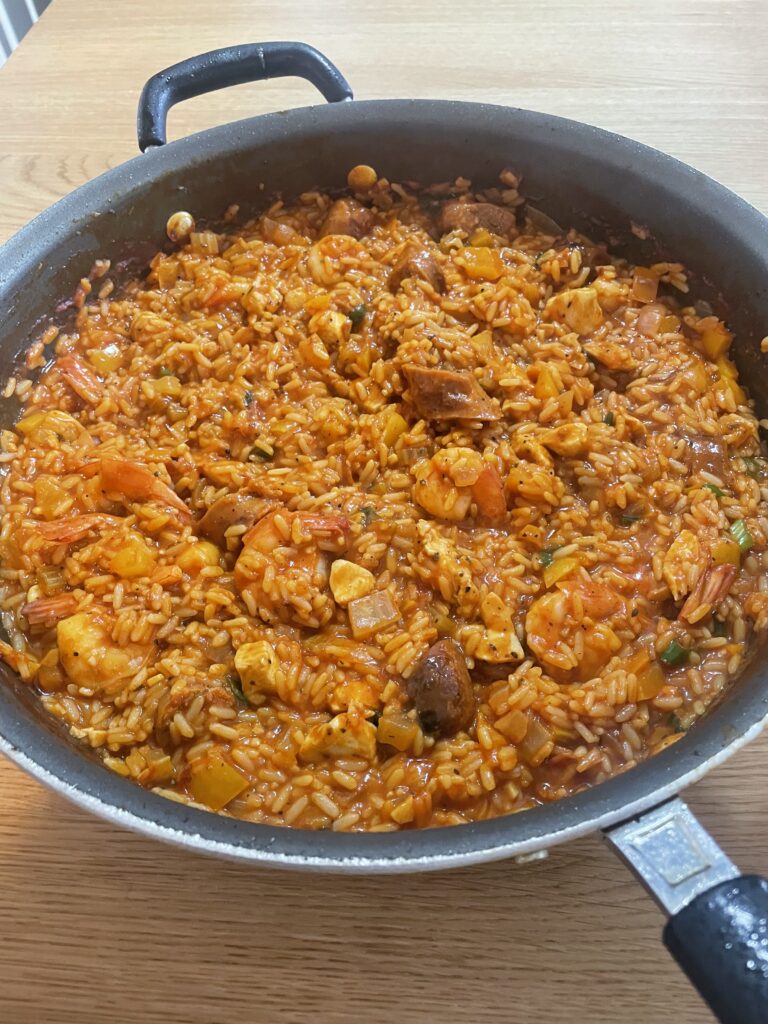
Nutrition and Dietary Considerations
One pot jambalaya is not only delicious but also offers a balance of key nutrients. The dish can be customized to meet various dietary requirements without losing its flavour and appeal.

Balancing Nutrition
Jambalaya provides a good balance of protein, vegetables, and carbohydrates.
The proteins come from ingredients like chicken, sausage, or shrimp. For example, using lean chicken breasts can help reduce fat content without sacrificing protein.
Vegetables like bell peppers, onions, and celery add fibre and essential vitamins.
Sautéing them in minimal oil preserves their nutrients while keeping the dish low in calories.
Using low-sodium chicken broth keeps the sodium levels in check, making it a heart-healthy option.
Adding whole grain rice can boost the fibre content, aiding digestion and helping you feel full longer. This combination makes jambalaya a well-rounded meal.
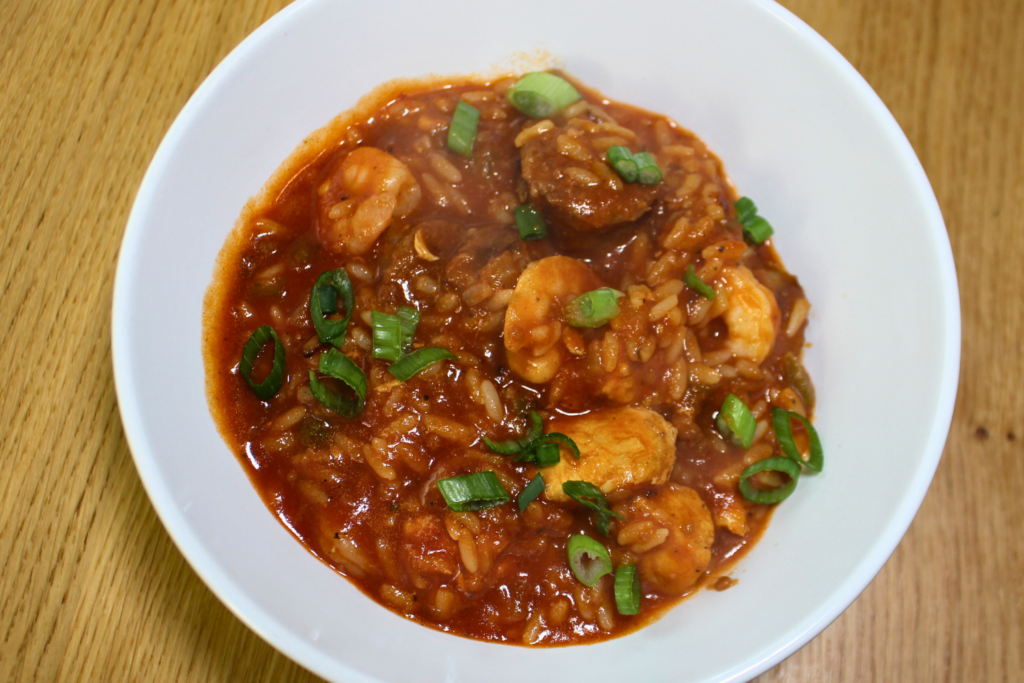
Adapting for Dietary Restrictions
Jambalaya is highly adaptable for various dietary needs.
For a gluten-free version, ensure that all seasonings and broths used are certified gluten-free. You can also substitute regular sausage with gluten-free varieties.
For a vegetarian version, replace the meat with plant-based proteins such as tofu or beans.
The smoky flavour can be mimicked using smoked paprika or liquid smoke. For vegans, simply omit the animal products altogether.
Cajun seasoning can sometimes be salty, so opt for low-sodium versions if you are concerned about sodium intake.
To lower caloric content, use less oil and leaner cuts of meat. This makes it possible to enjoy jambalaya while adhering to dietary restrictions.
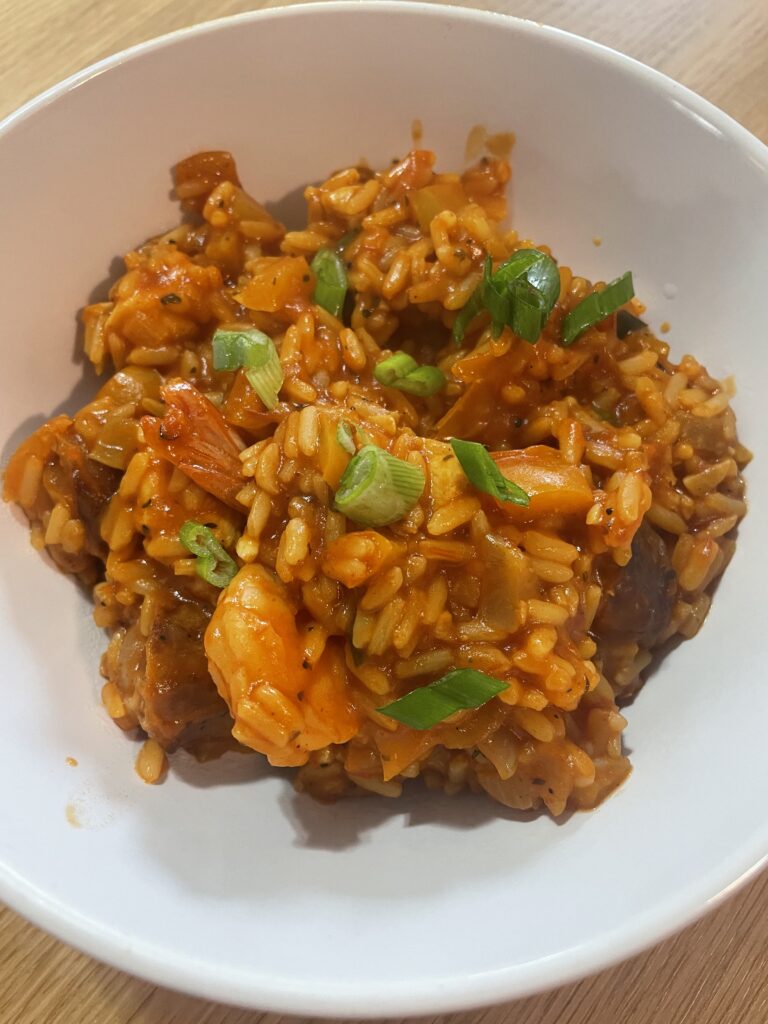
Simple and Easy One Pot Jambalaya Recipe
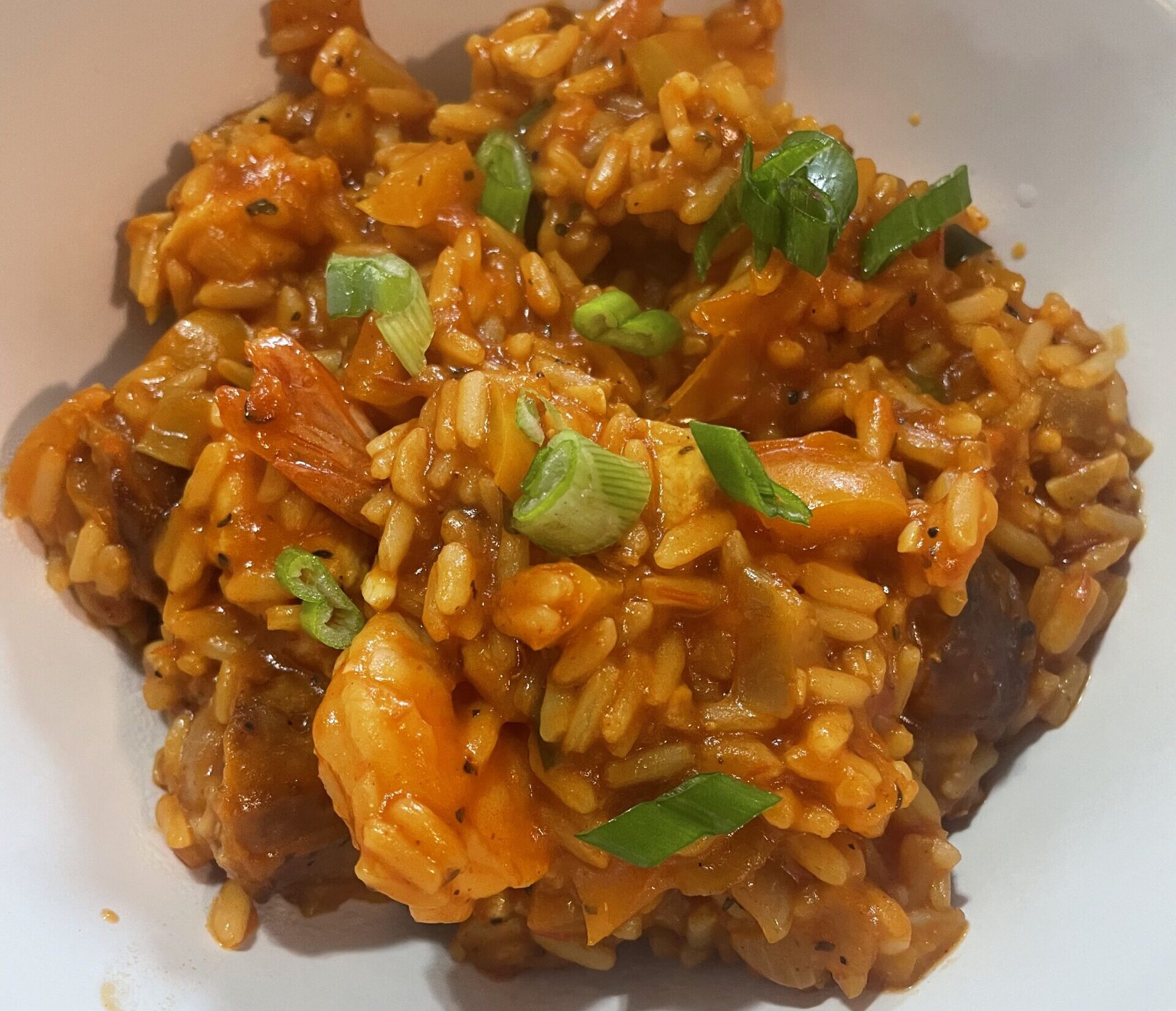
Ingredients
Method
- Heat a large pan with a lid over medium-high heat. Add enough vegetable oil to coat the bottom. Cook the chicken and sausage for 6-8 minutes, stirring occasionally, until browned and fully cooked. Remove from the pan and set aside.
- Add more oil to the pan if needed, then sauté the bell peppers, onion, garlic, and celery for 5-7 minutes until softened.
- Pour in the chicken stock, crushed tomatoes, thyme, cayenne pepper, and Cajun seasoning. Stir everything together and bring to a boil.
- Add the rice, reduce the heat to low, and simmer for 20 minutes, stirring occasionally to prevent sticking or burning.
- Add the frozen shrimp and cook for another 4-6 minutes, stirring occasionally. Return the cooked chicken and sausage to the pan.
- Once the jambalaya thickens, taste and adjust the seasoning with more Cajun seasoning, salt, or pepper if needed.
- Serve hot, garnished with green onions.

